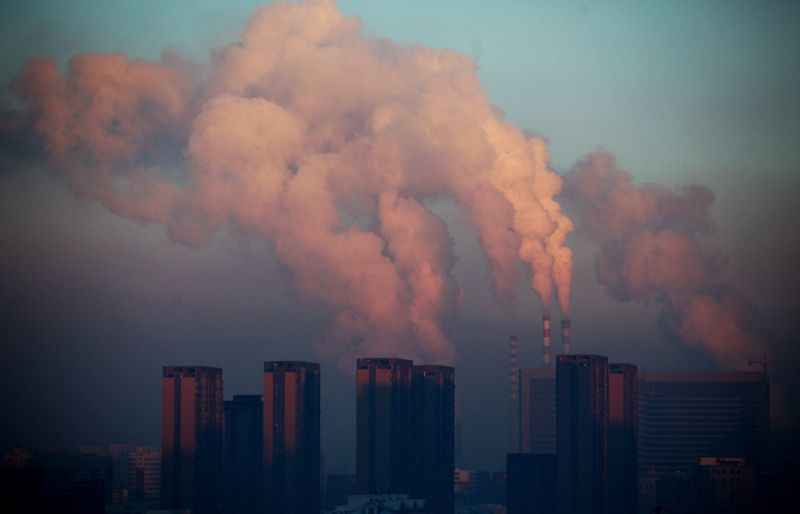What Percent of the World's Pollution Comes From China
Too much coal —
China's carbon pollution now surpasses all developed countries combined
As China's coal-reliant economy has boomed, so, too, have its emissions.

Carbon pollution from China's bustling, coal-intensive economy last year outstripped the carbon pollution of the US, the EU, and other developed nations combined, making up a whopping 27 percent of all greenhouse gas emissions worldwide.
As China's economy has grown in the last 30 years, so too have its emissions. While pollution from developed countries has largely been flat since 1990, it has more than tripled in China. The country's soaring emissions and stable population mean that its per capita emissions have grown quickly, too. At 10.1 tons per person, emissions are just below the 10.5 ton average of the 37-nation Organization for Economic Cooperation and Development, or OECD.
The US still leads the world in per capita emissions, at 17.6 tons per person, according to Rhodium Group's numbers, though President Joe Biden has pledged that the US will halve emissions by 2030. The other developed countries in the report include all 27 current EU member states: the UK, Australia, Canada, Chile, Iceland, Israel, Japan, Korea, Mexico, New Zealand, Norway, Switzerland, and Turkey.
China's draconian lockdowns early in the COVID-19 pandemic allowed the country's economy to bounce back relatively quickly, and as a result, Rhodium expects that China's emissions per capita in 2020 will surpass the average of the OECD nations.
Over the last few years, China's growing carbon emissions have drawn the attention of leaders from around the world. In 2018, the Communist Party lifted a ban on the construction of new coal plants, and its policies have become more generous in years since. Though China has installed a large number of solar panels and wind turbines, fossil fuels still power the vast majority of its industries and transportation modes. Its electrical grid is particularly carbon-intensive—half of the world's coal is burned inside China's borders.
China counters that it's within its rights to burn such vast quantities of fossil fuels since developed countries did the same over the past few centuries. The country is not entirely wrong: developed economies have produced the most cumulative emissions since 1750, around 1,000 gigatons. But China's rise means it has swiftly become the largest contributor in recent years. The country emitted 52 megatons of carbon dioxide and equivalent greenhouse gases in 2019, according to a report by the Rhodium Group, and has emitted a cumulative 200 gigatons since 1750.
China's argument has merit, but it also elides the fact that renewable sources like wind and solar were not available on the same scale as fossil fuels for much of the last 300 years. Half the OECD's cumulative carbon emissions were produced before 1980, when wind and solar were expensive compared with fossil fuels. Today, though, those numbers have largely flipped. In the US, it's now more expensive to run 80 percent of the nation's coal power plants than it would be to shut them down and install new wind farms and solar plants.
Wind and solar prices are dropping in China, too. They're expected to undercut new coal plants this year, according to consultancy Wood Mackenzie, which could make the 247 GW of coal power the country has under development look not just archaic but unnecessarily expensive. It could imperil China's investments elsewhere. The country is the world's largest financier and developer of coal plants abroad, with over 100 GW funded by Chinese companies.
China's pledge for the Paris Agreement states that it will hit its carbon pollution peak in 2030 and reach net zero 30 years later. Those targets appear achievable, according to the Climate Action Tracker, an independent analyst, but the group says the goals are "highly insufficient" to reach the 2˚ C warming target set forth in the agreement.
What Percent of the World's Pollution Comes From China
Source: https://arstechnica.com/tech-policy/2021/05/chinas-carbon-pollution-now-surpasses-all-developed-countries-combined/